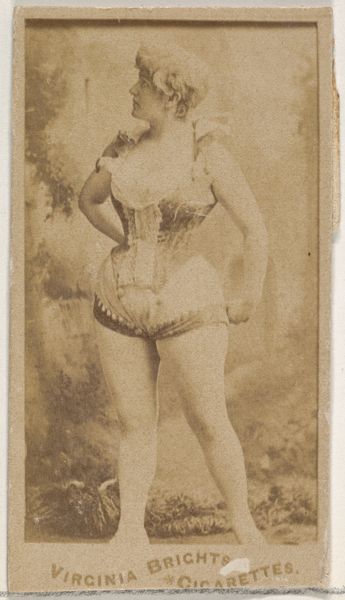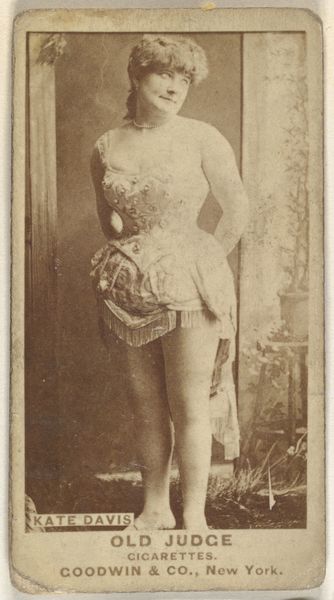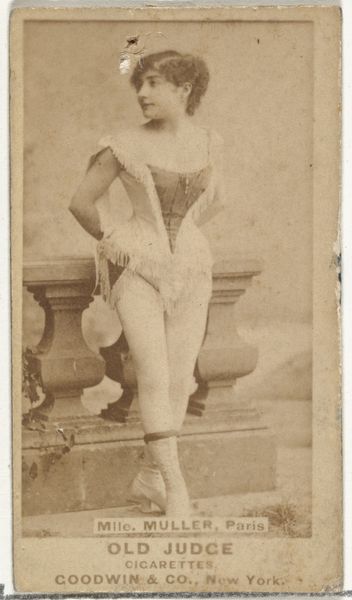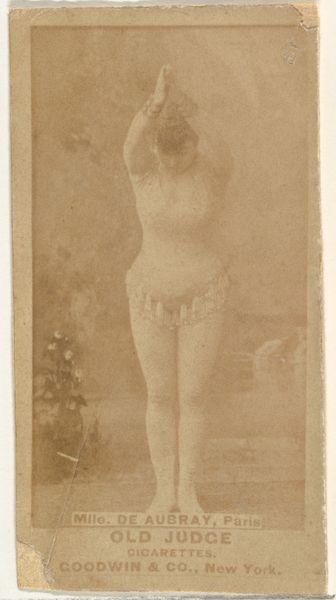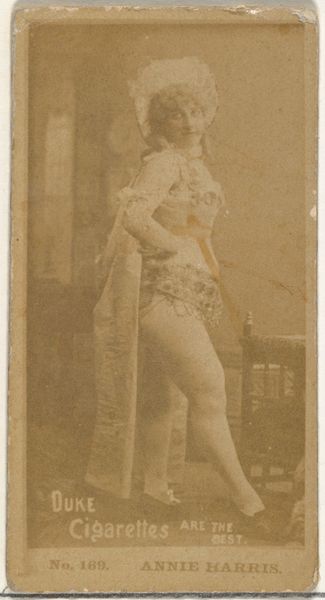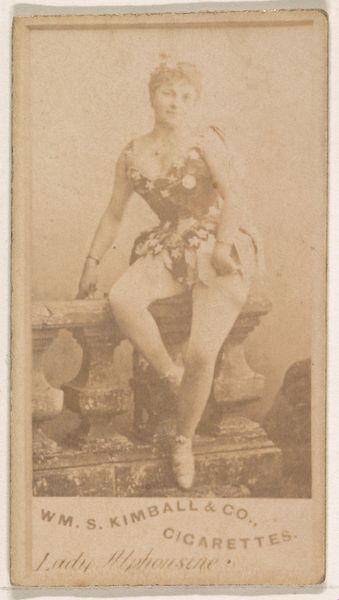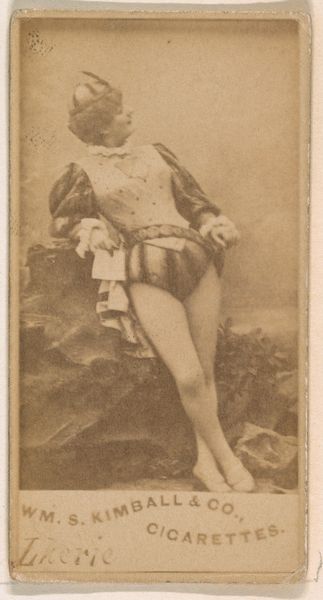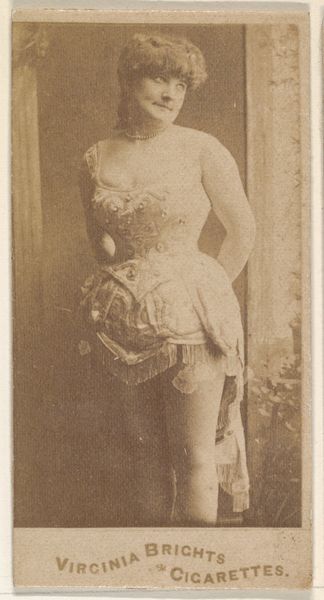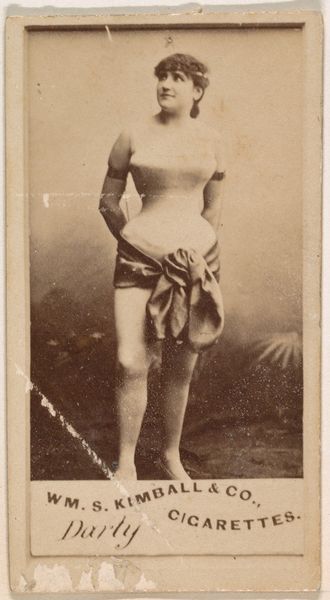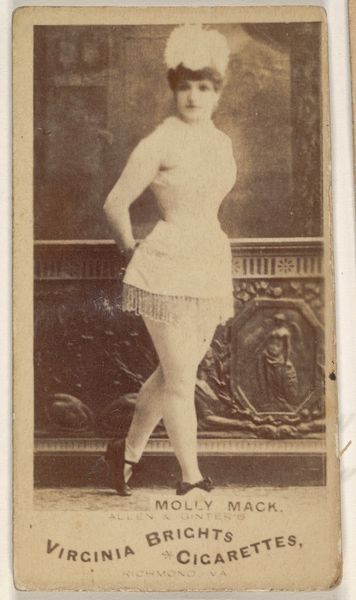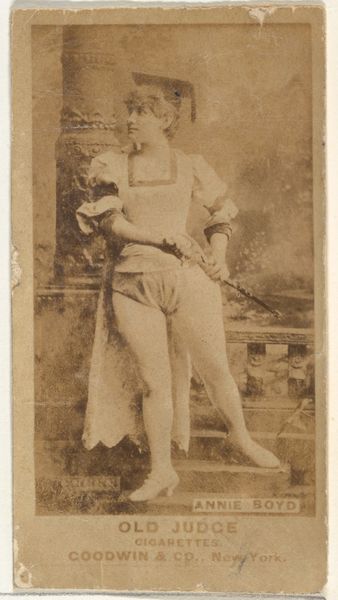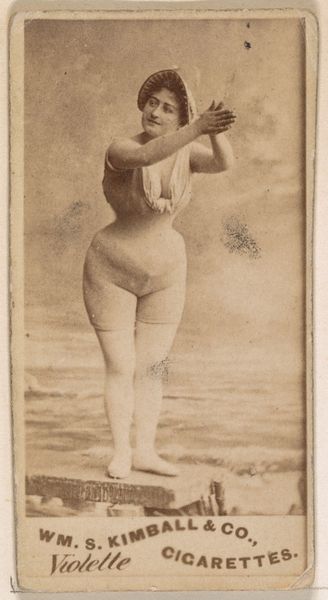
Mlle. De Arti, Paris, from the Actors and Actresses series (N171) for Old Judge Cigarettes 1886 - 1890
0:00
0:00
drawing, print, photography
#
portrait
#
drawing
# print
#
photography
Dimensions: sheet: 2 11/16 x 1 3/8 in. (6.9 x 3.5 cm)
Copyright: Public Domain
Editor: Here we have "Mlle. De Arti, Paris," a photographic print from the Actors and Actresses series by Goodwin & Company, dating roughly from 1886 to 1890. It's striking how this feels like a promotional item, a cigarette card even. What jumps out at you when you look at this piece? Curator: It's fascinating to consider this image as a commodity, isn't it? Placed within the context of late 19th-century capitalism, these cards acted as miniature, readily-consumable artworks used to sell a lifestyle, and ideas about entertainment. Consider the layers: a portrait of an actress, a performer, reproduced en masse for a primarily male audience and embedded within the culture of smoking. How does this mass production and dissemination alter the agency of the subject, Mlle. De Arti, in your opinion? Editor: I guess it turns her into an object to be consumed, too, losing control of her image. Did she have any say in how she was portrayed? Curator: That's a critical question. Likely not. It speaks to the power dynamics inherent in image-making, particularly concerning women in the public sphere. The male gaze, consumerism, and celebrity culture all coalesce here. The print blurs the lines between art, advertising, and objectification, inviting us to critique the social structures that shaped its creation and reception. What impact does that history have on the way you engage with the photograph? Editor: I hadn’t thought about all that, it seems obvious once you point it out, like how so much is communicated through this one image, both visually and socially, from gender and fame to consumer culture. Now I can see beyond just the aesthetic of the photograph. Curator: Exactly. Recognizing this image as more than just a portrait opens avenues for conversations about gender roles, celebrity, and the power of visual representation within the context of 19th-century America. We learn to appreciate art through historical context and the cultural forces that made it.
Comments
No comments
Be the first to comment and join the conversation on the ultimate creative platform.
